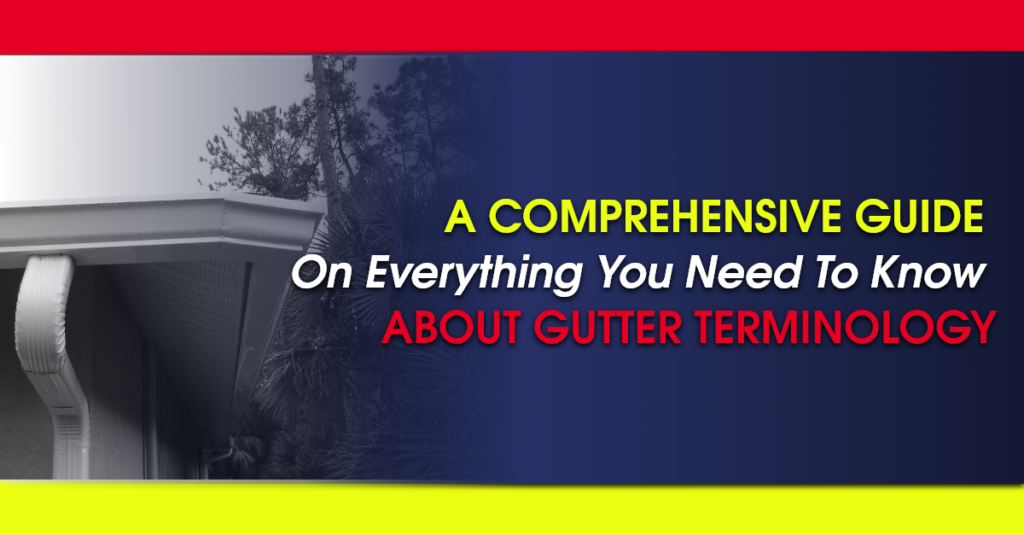Many homeowners see the gutters as an additional feature on their home’s exterior, unaware of how important they are to the structural integrity of their roof and the rest of their home. And while you may only see one part of a gutter, there are several components that work together to protect your home from water damage. At StormForce, we believe that an informed homeowner is the best kind of homeowner. That’s why we’ve created this comprehensive guide on gutter terminology to help you discover what terms you should know about your gutter and what they do.
The Anatomy of a Gutter System
An effective gutter system includes multiple components silently working together to protect your home. Let’s take a look at the vital parts of a gutter system and what each one does.
Gutters
The gutters are shallow troughs fixed along the edge of a roof to catch rainwater and carry it away from your home. They are made of waterproof materials, with the most common being steel, aluminum, copper, or zinc. Vinyl is another good option.
To ensure gutters drain properly, they are installed to slope downward half an inch for every 10 feet toward a downspout. Gutters typically come in 5” or 6” sizes.
Downspout
Next, the downspout is a completely enclosed vertical pipe that runs along the vertical edges of your house and meets the end of a gutter section. The downspout is designed to channel the water collected by the gutters and dispose of it on the ground level away from your home’s foundation.
Elbow
Elbows are the bent metal you see on your gutter system, typically made of aluminum, connected to the end of the downspout. It helps channel water away from the foundation of your home onto a splash block.
End Cap
At the end of each gutter run, where water exits to the downspout, is an end cap. It is cut to the precise shape of the gutter and prevents water from draining out the side of the gutter before it can be transported to the downspout. End caps are caulked with gutter caulk so they remain leak free.
Miters
Additionally, you will need a miter if you have a hip roof or a corner where two gutter runs meet. This extra piece is installed where two gutter troughs meet as an extra degree of protection against failure and leaks. While miters can be store-bought, the best ones are custom-made to provide a watertight seal.
Splash Guards
Splash guards are installed at the intersection where a valley drains into a gutter. They are fabricated from pre-painted aluminum and typically come in the same color as gutters. A splash guard is essential in preventing erosion around your property. Without it, rainwater in the valley could overshoot the gutter and drain down the side of your home.
Hidden Gutter Hangers
A screw-in hidden hanger is a piece of metal with an opening on one side. It clips to the front edge of the gutter section and then is screwed into the fascia along the back side of the gutter runs. A long screw runs through the hanger, through the back of the gutter. Hidden hangers have become increasingly popular. They are both aesthetically pleasing because they can’t be seen from the ground, and are also much stronger than traditional gutter spikes which loosen easily.
Pipe Cleats
These are fasteners that attach the downspouts to the side of your home. The piece of metal looks like a clip that is screwed into the siding on the edge of your downspout pipe.
Slip Connector
A slip connector is like a small piece of gutter used to interlink two sections of a gutter run.
Fascia Boards
Finally, although they are not actual components of gutters, the fascia boards are an integral part of the gutters system. They are the long, straight boards mounted at the lower edge of your roof. They are fixed directly to the lower ends of the roof trusses, providing the base onto which the gutters are mounted.
Types of Materials Used in the Construction of Gutter Systems
Rain gutters can be made of various materials, which vary in physical properties and aesthetic value. What your gutters are made of and how they are constructed can determine their quality and how long they will last.
Common types of gutter materials include:
- Aluminum
- Stainless steel
- Vinyl
- Zinc
- Copper
What Do Gutters Do To Protect Your Home?
A gutter system is designed to channel rainwater and snow melt from your roof, through the downspouts, and away from your home’s foundation. Without gutters, water will just run down the roof’s slope unto your foundation, siding, and landscape, causing costly damage.
Some of the functions of gutters include:
- Protecting your landscape
- Preventing pooling water along the foundation, soil erosion, and basement flooding
- Protecting your home from mold
- Preventing damage to your home’s siding
If you need new gutters or have questions about your existing gutter system, contact StomForce in Jacksonville, FL. We always deliver high-quality and excellent gutter installation, repair, and maintenance services.
